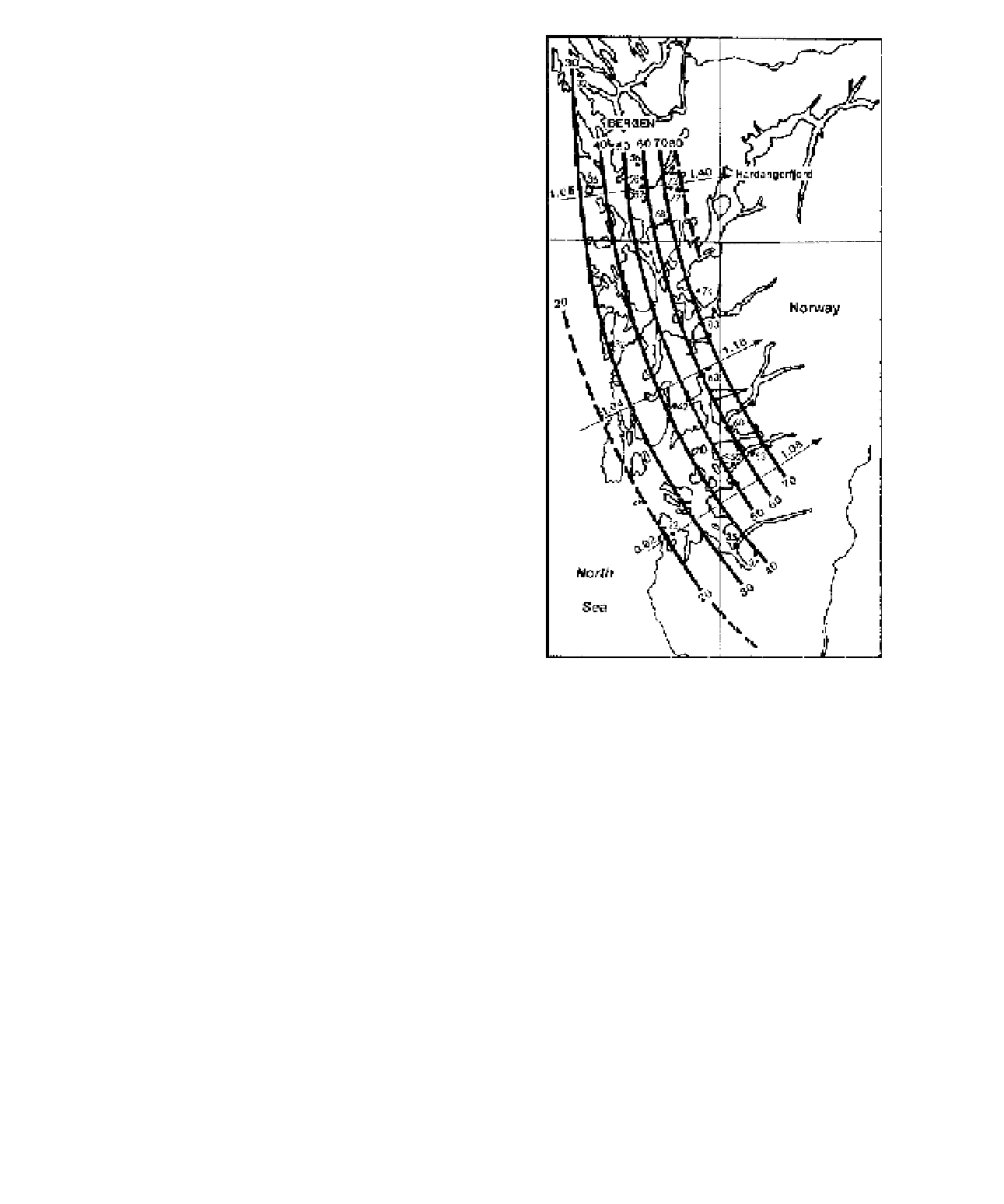Geoscience Reference
In-Depth Information
Figure 8-11.
Kame terrace, Eidslandet, western
Norway. The terrace surface (farmstead) is underlain by
stratii ed sand and gravel of a glaciomarine delta. The
terrace scarp (foreground) represents the ice margin
position and the terrace surface marks sea level in the
fjord at the time the delta was deposited by glacial
melt water. Photo by J.S. Aber.
the Mississippi valley (Blum et al. 2008). Lesser
depression and rebound extended
>
100 km to
the east and west along the coast. The timing of
rebound coincided with release of melt water
at the end of each glacial cycle from continental
ice sheets to the north. At present, high sea level
combined with sediment accumulation and
compaction are causing crustal depression and
delta sinking. This example demonstrates the
importance of glacially related processes for
understanding delta behavior far beyond the
actual limits of ice sheets.
Figure 8-12.
Reconstruction of crustal uplift in
southwestern Norway since the Younger Dryas phase of
glaciation, approximately 11,000 corrected radiocarbon
years ago (Denton and Hendy 1994). Contours indicate
amount of uplift (in m relative to modern sea level);
uplift gradients are given in m/km along proi les. Map
adapted from Anundsen, K. 1985. Changes in shore-
level and ice-front position in Late Weichsel and
Holocene, southern Norway.
Norsk Geograi sk Tidsskrift
39, p. 205-225, Fig. 8.
8.3.4 Modern sea-level rise
Modern eustatic sea level is rising at a rate of
about 0.3 cm per year due to slow melting of
glacier ice
1
and thermal expansion of sea water
(Pilkey and Young 2009). While 3 mm per year
may not seem like much, this rate adds up to
30 cm (one foot) per century. For low-lying
coastal wetlands this becomes signii cant. From
the Maldive Islands in the Indian Ocean (see
Fig. 5-21), to Kivalina, a barrier island on the
Alaskan Chukchi Sea coast, to the venerable city
of Venice, Italy, populated places and fragile
wetlands are at risk of disappearing during the
twenty-i rst century. In many cases, these places
will be simply abandoned, as engineering solu-
tions to rising sea level are either too costly or
environmentally unsound (Pilkey and Young
2009).
1
Glacier ice refers to land-based glaciers and ice
sheets. The melting of marine pack ice and ice shelves
does not affect sea level, as these ice bodies are
already l oating.






